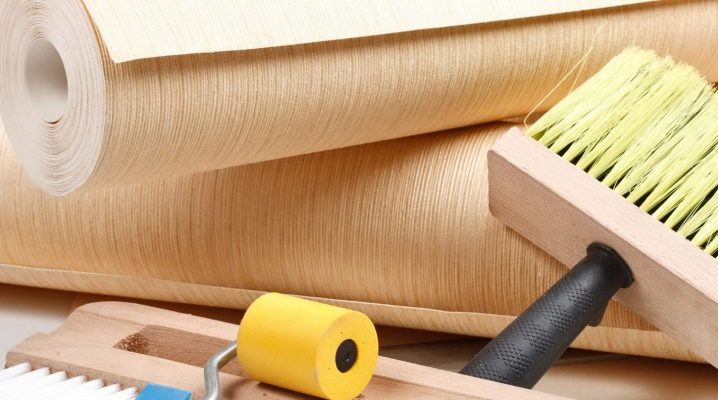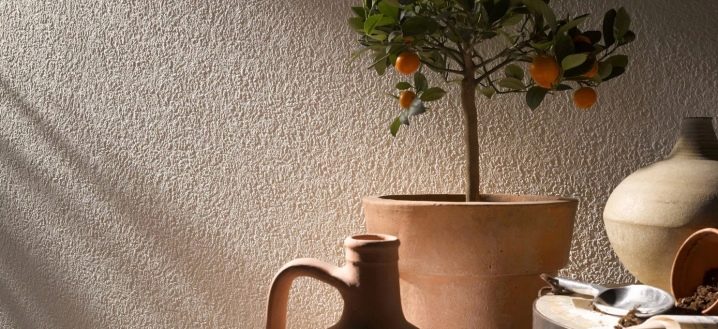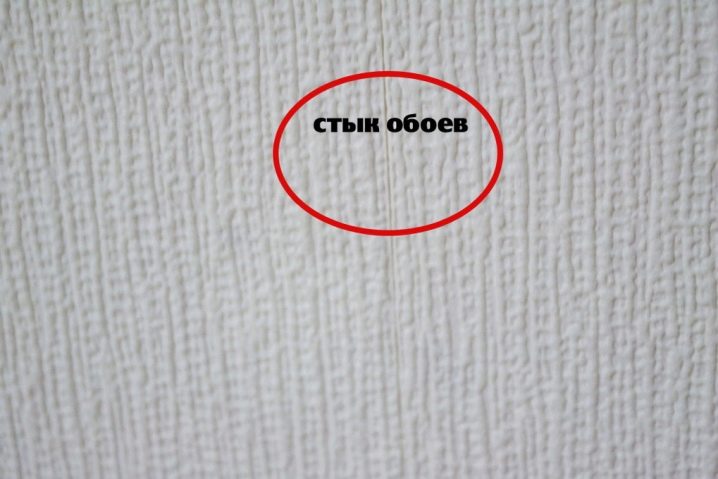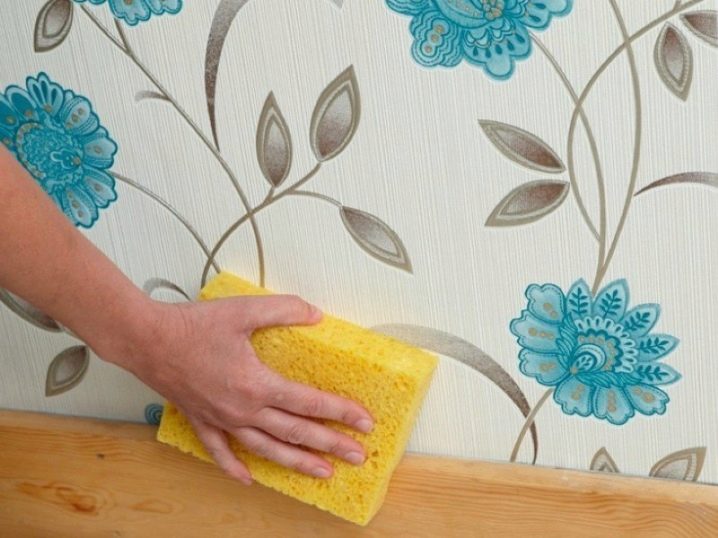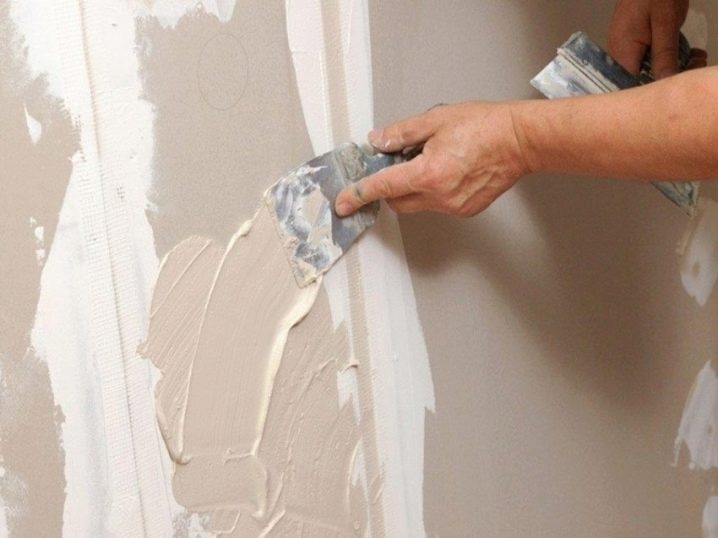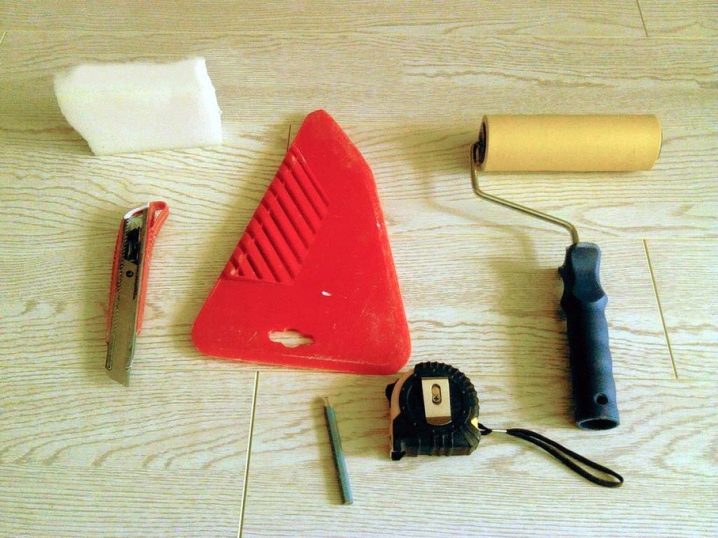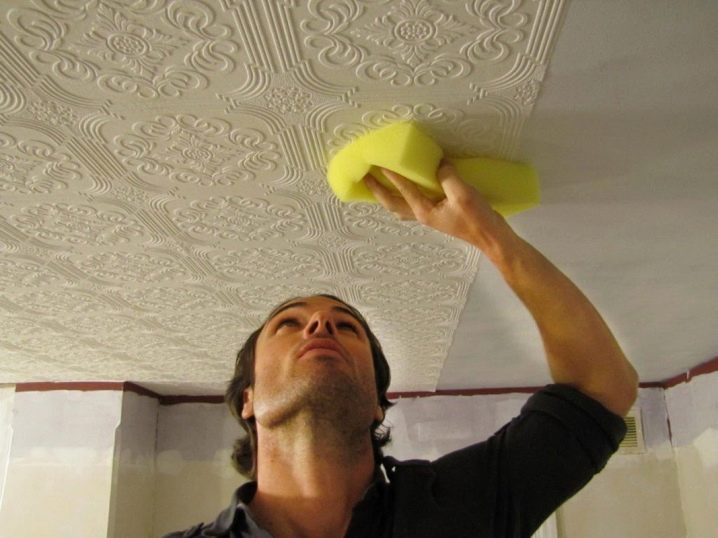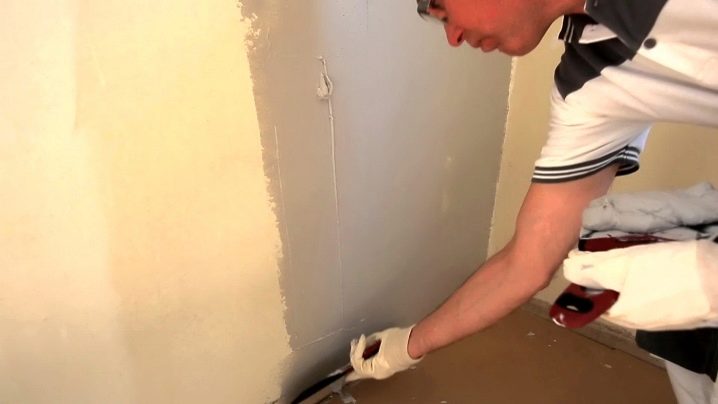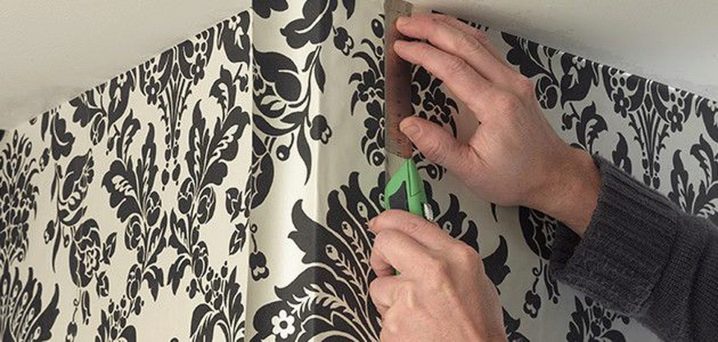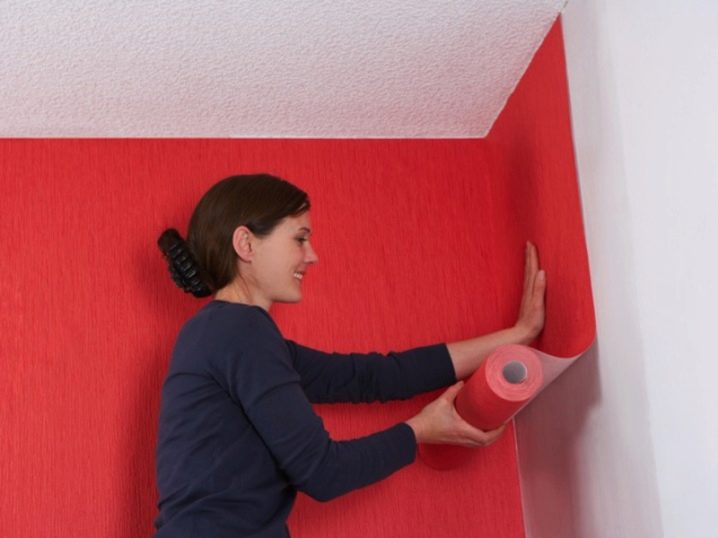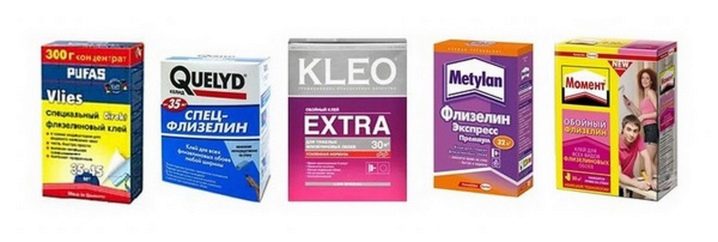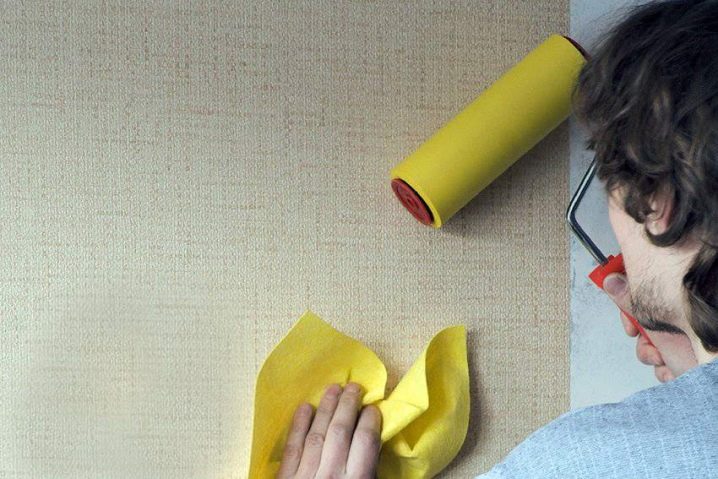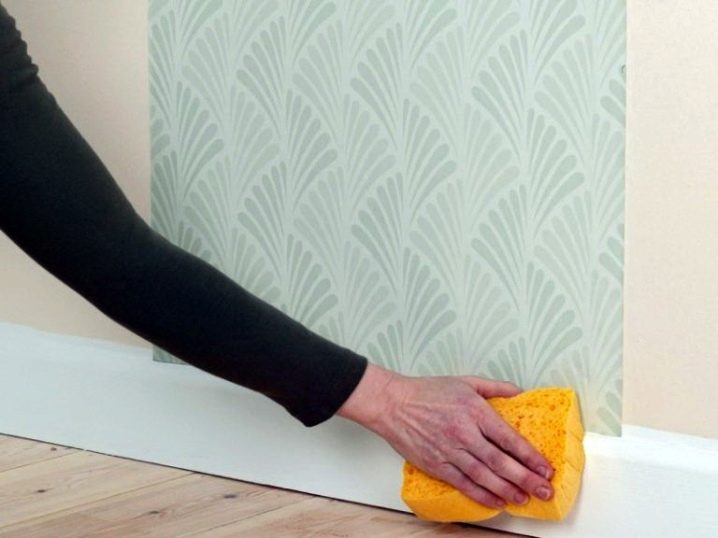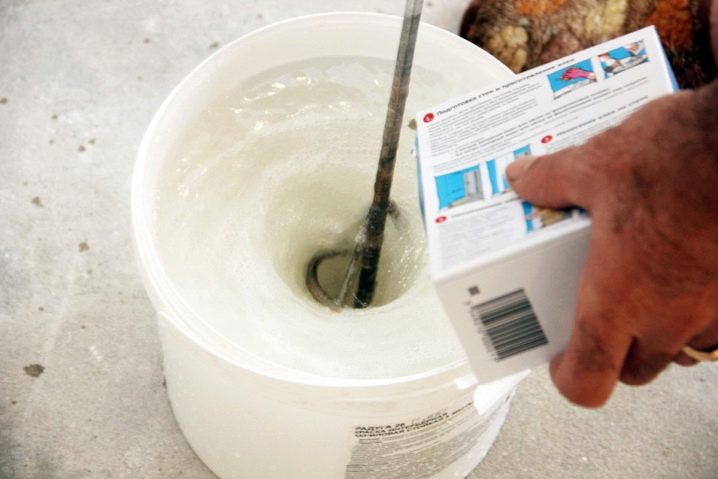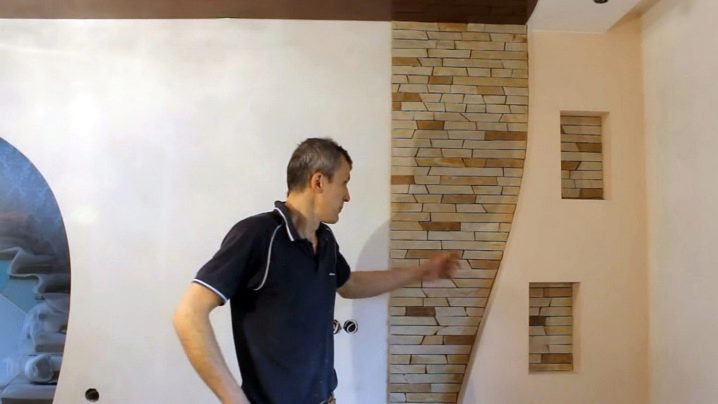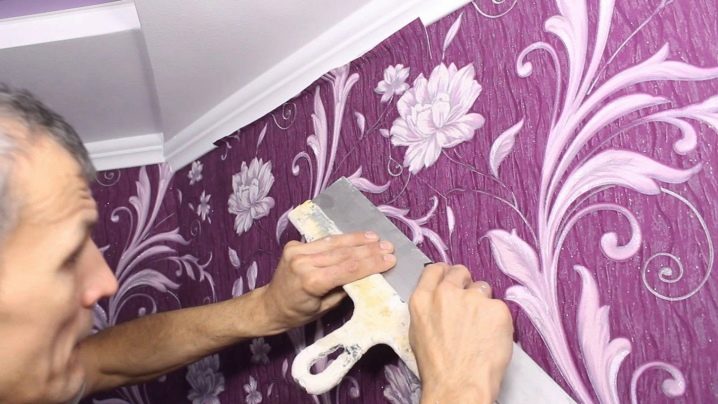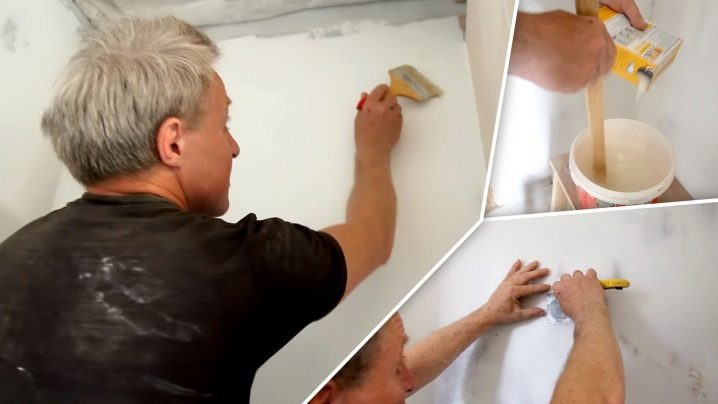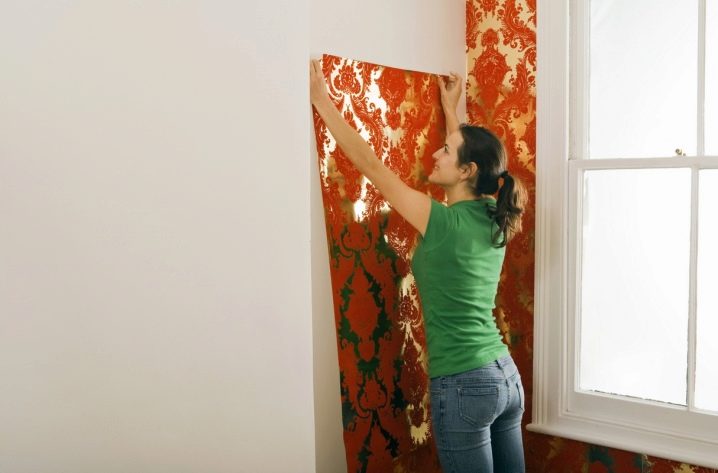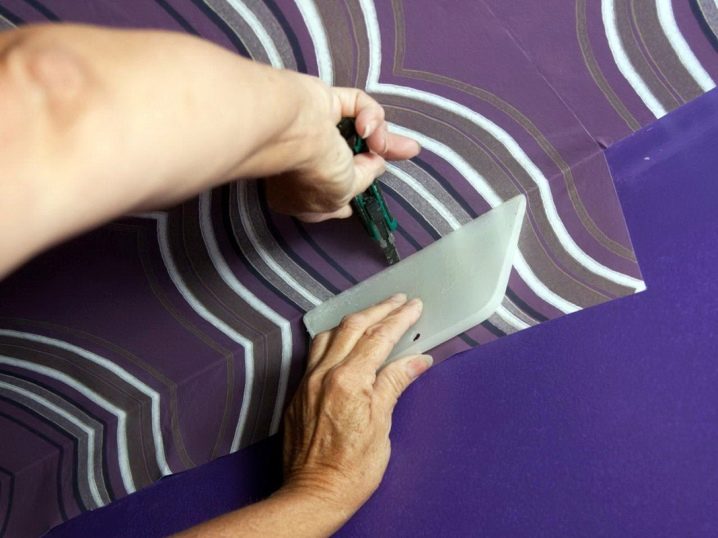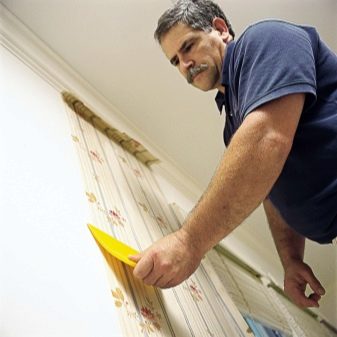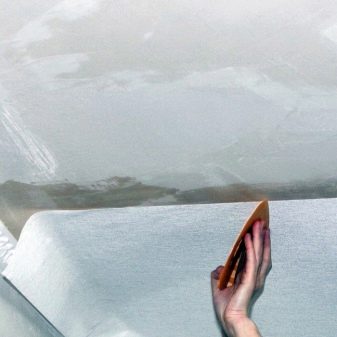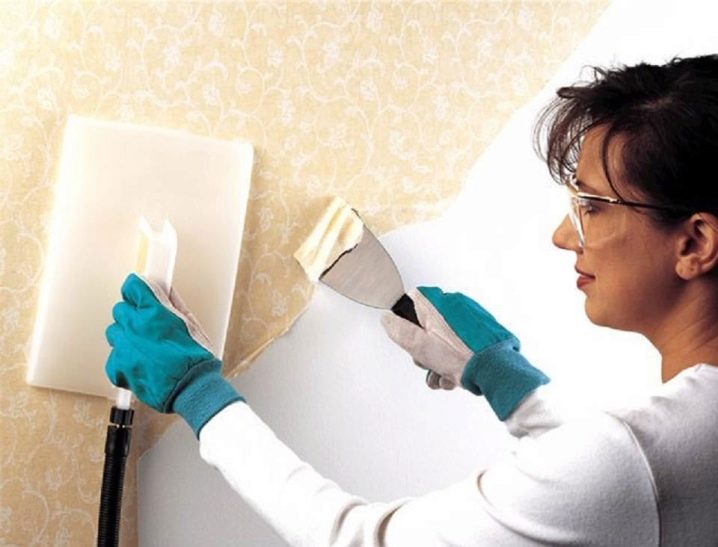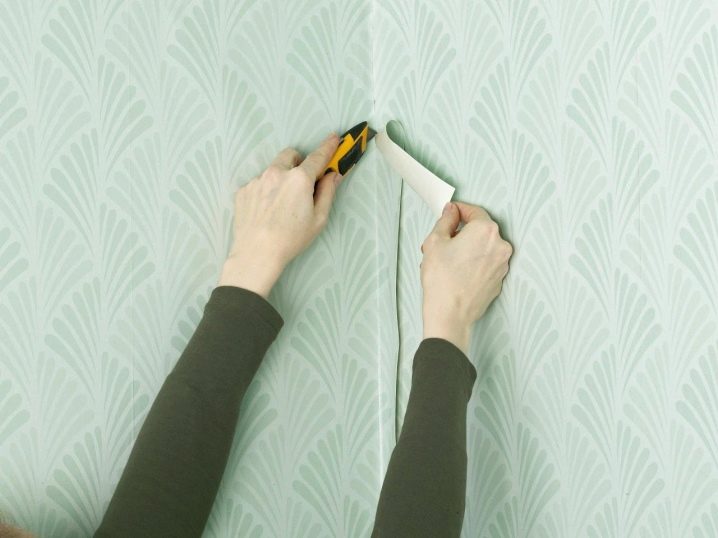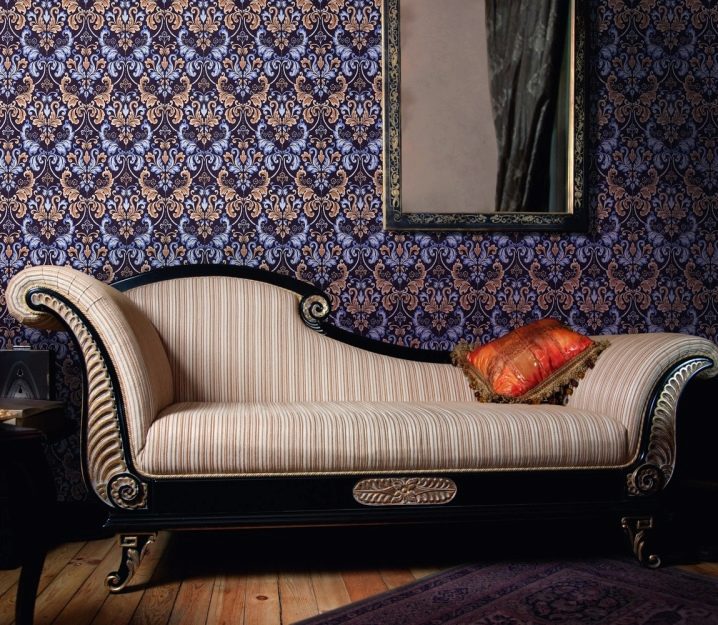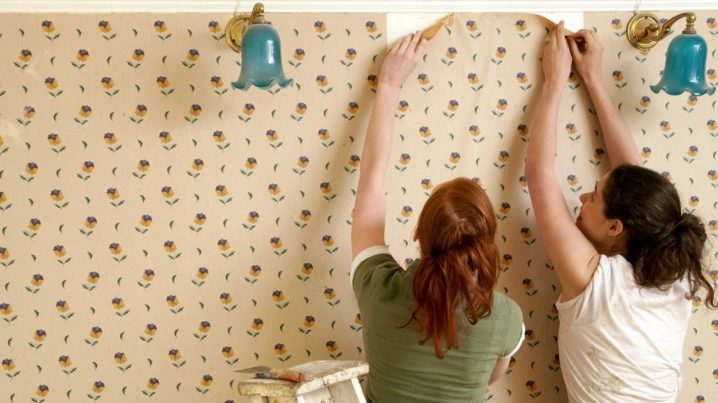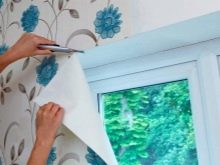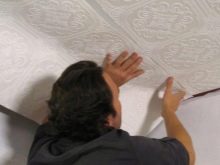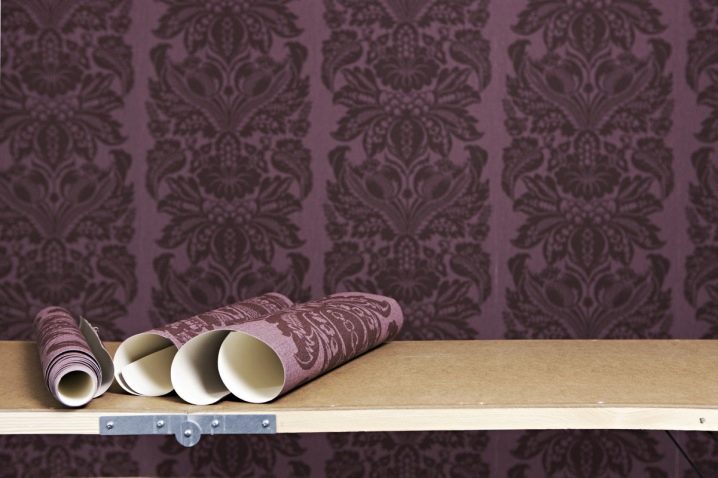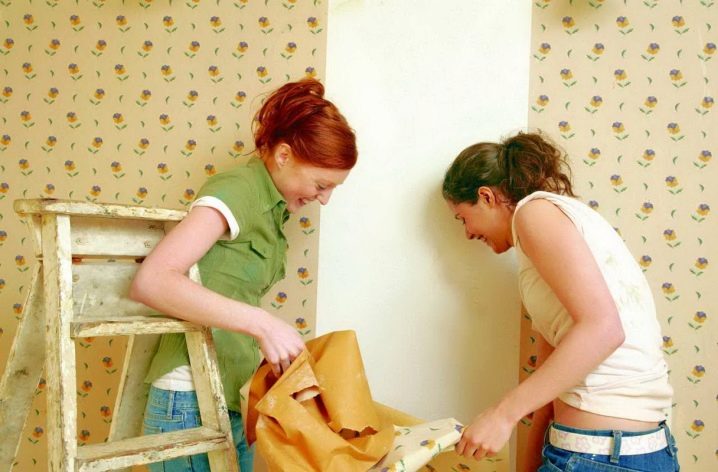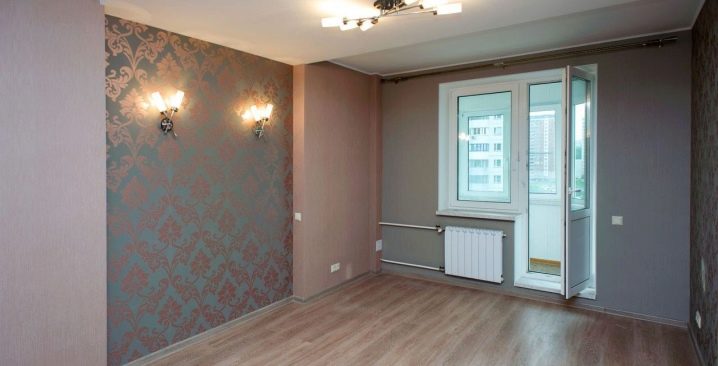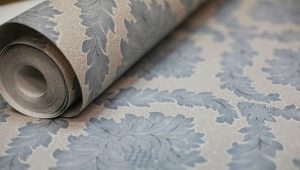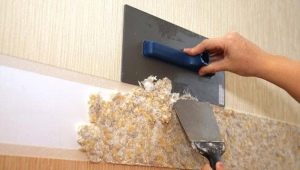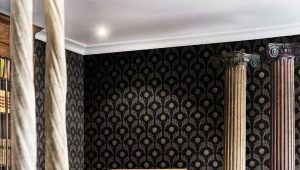How to glue non-woven wallpaper?
Wall-paper from a flizelin is considered nearly as the best option for independent finishing of walls in any room. They are not deformed after gluing, they are distinguished by a thick and stable base, are hygroscopic and practically harmless. But only if all the rules of use are followed, you can expect a long service life.
Coverage Features
Non-woven base wallpapers are always wide (roll width is 106 cm). This means that fewer joints will have to be made, and the more important is each connection, because it will be a shame to fail the whole thing because of elementary inattention. These wallpapers are heavy and structural, have a dense texture, so they are able to mask the defects of various surfaces. Low susceptibility to light avoids burnout - the surface does not shed.The internal structure ensures good air permeability, the fabric can absorb a limited amount of moisture and not deform. Vinyl or especially paper solutions do not possess such dignity in principle.
Gluing non-woven wallpaper is also attractive because they:
- can be repainted many times without losing its external attractiveness.
- Durable to mechanical damage and excellent resistance to destructive external influences.
- Well tolerated wet cleaning.
- Practical when performing repair work, they can be glued even in small rooms.
- When dismantling do not require maceration.
Necessary tools and materials
Before you glue non-woven wallpaper, you need to:
- remove the previous coating (if any);
- close the putty irregularities;
- thoroughly primed walls;
- turn off the power, remove the external housing of the outlets.
Important: take care of high-quality primer, otherwise ensure the adhesion of wallpaper with the wall will not work.
For work you will need:
- roller;
- moderately wide brush;
- glue container;
- roulette;
- stationery sharp knife.
Measurements and adjustments are carried out using a level and a long ruler.You will also need a simple pencil, a sponge, cotton matter, water and, of course, the required amount of wallpaper and non-woven glue in the right amount. If a large repair is planned, and not just wallpapering, be sure to take the laser level, not the hydraulic one. A five-meter roulette is better than a three-meter roulette, because it is much more practical. The roller should have a long pile, and it is advisable to buy a spatula plastic, with soft edges. He will roll the wallpaper as it should.
Sponge should take foam. You will also definitely need a soft brush, it can be used to smooth out the glued wallpaper in case of irregularities. A useful accessory is a mesh that simplifies cleaning the rollers from excess glue. In addition to the rubber spatula, another one is useful, narrow with a metal blade. It is also necessary to prepare two buckets: one for glue, the other for clean water (it is better to use plastic).
Training
The first step in preparing for gluing non-woven wallpaper is the inspection of surfaces. It is easiest to glue onto paper, clean concrete, drywall, chipboard and plaster, but only if these surfaces are perfectly flat and in good condition.
Important: the color of the rough surface must be uniform and correspond to the tone of the wallpaper, otherwise it will shine through them, which will violate all aesthetics. If newspapers are stuck on the wall, they must be removed. Any defect is removed, dirt is cleaned.
Even the paint should be peeled off; if necessary, fine finishing of the draft layer is made with an emery paper with medium grain. Then the surface is primed. The quality of non-woven wallpaper allows you to glue them end-to-end, and the joined sheets almost do not allow to see the seam.
Rules for working with non-woven wallpaper imply that they need to stick on the corner. From there, measure the meter in length, and exactly along the vertical lead the line for orientation. Next, checking the level, such lines are placed on the entire wall. Since the typical width of the roll is 106 cm, there is an excess of material - this allows you to make the joints at the corners clearer.
Then comes the turn of working with the wallpaper itself. It is best to cut all the blanks at once.
An important caveat: before the “cutting” measure the height of the room at different points in increments of 20-30 cm, and if the walls are uneven in height at least a little, consider this when cutting.
A large picture can look very attractive, but you need to select it with all the care, without missing the obligatory coincidence in the marking process.
A stock of 10-15 cm in height does not always help with a very high ceiling height, therefore, the length of each workpiece should be made larger than the height of the room. It is best to cut on the very floor, for this spread plastic wrap; high-quality linoleum or laminate simply wash and dry. Rolls roll face down, measure the strip with a margin for adjustment and mark it with a knife. For this serif, the fabric is bent so that the ends of the unbent fragment and the main panel are on the same line. Having verified this, you can cut the wallpaper with a special knife or scissors for paper.
After rolling the subsequent sheets, they immediately check how accurately the drawings fit. The most convenient way to control this is by paying attention to some well-defined part of the graphics. Only after everything is combined, you need to work on the next workpiece. Attention: only specially designed glue is used for non-woven wallpapers.Which is poured into a container with water in a thin stream, while constantly stirring. The mixture should stand, then stir it again and choose lumps. At this training is over.
It is important: it is absolutely impossible to glue new wallpapers onto old wallpapers, and it’s not even about the special properties of non-woven fabric. For many years of operation, wall covering inevitably absorbs grease and soot, dust and soot, allergens and industrial emissions. Therefore, the only way is to smooth out the base to a perfectly flat roughing surface, and then prepare everything as described above.
Do I need to glue the wall?
The correct answer is simple: stick non-woven wallpaper, if you smear glue them, will not work. So smear the walls with glue, and only them, absolutely necessary. But if any of the strips are already missed, then there is no need to cover the wall: just remove the excess glue with a soft cloth, which will act at the joints. Important: glue is applied only to the strip, with which they are currently working., and not on all the paintings at once.
The primer may not be used only in one case: the wallpaper is not originally intended to be used for a long time, and they act only as a temporary solution, for example, before moving or the appearance of a more suitable wall covering.If not primed, it can be found that the adhesion of the material to the surface is insufficient. It is for this reason that the canvases often fall off suddenly, as if by themselves.
It is recommended to start pasting from door or window openings. and move into the room, and not vice versa. Always smear the wall not exactly on the width of the roll, but with some margin. Particular care should be taken of the sticker at baseboards, in corners, in corners and in places with complex configuration, for example, where pipe terminals are located, electric meters, hanging furniture, wall hangers are placed.
In contrast to conventional, non-woven wallpaper on PVA glue is allowed. The fact is that their dense, heavy structure makes standard wallpaper glues not effective enough, but, in the final analysis, follows the instructions of the manufacturer. As written in the instructions, so should do. If you add polyvinyl acetate glue to the wallpaper (its consumption is 150 g per liter of the main adhesive mass), the coating will hold more firmly.
Sticking
Overlapping non-woven wallpaper glue in the corners, it allows you to visually cover various irregularities and deviations from the norm.At the corners are placed corners of plastic, fastened to the walls. Warning: no need to overly “go” on the neighboring walls.. The technology implies that the roller, after being dipped into the glue, is necessarily carried out on the grid, and only when the excess composition is removed, can it be carried along the wall. Glue should be on top, to do this, take the canvas by the edge and apply to the wall. Then the roll smoothly lead down, smooth the canvas from the center to the edges with a special brush or roller. You can also use a plastic spatula, but it requires caution.
Make sure not only that the joints are not visible, but also whether there are bubbles, folds somewhere. Attention: after pasting several strips, all subsequent seams are carefully rolled with a roller. If there is an extra piece left below, it is cut off, but not immediately, but only after the canvas dries. On the outside corners, the wallpaper is glued with an overlap of 5 cm. Then a ruler is applied to the middle of the strip and a knife cut is made through it.
Meter wallpaper glue butt, but you can not stretch the fabric too much or smooth it too much. A thin strip can easily tear, but it will not work to fix it.Warning: use only brand new glue every time. Remaining from the last repair or from yesterday is absolutely no good.
It is not difficult to stick non-woven photo wallpaper, but still this work should be done only with sufficient experience and knowledge. It is necessary to adjust the drawing with an error of no more than 1 mm. If you have never glued wallpaper at all, to take on such a thing should not be. It is better to choose the option for painting, it is easier and more reliable to use.
The simplicity of gluing drywall wallpaper is only apparent, and without sufficient preparation even its even surface will not simplify the task. All visible metal fasteners must be covered with an anti-corrosion agent. Be sure to use an acrylic primer that suppresses the development of mold colonies. Important: do not use too much wallpaper glue, otherwise plasterboard sheets can be sodden and deform.
In order to exclude the transmission of the base, the installation should be carried out not on the drywall itself, but on the white emulsion paint. Please note that gluing wallpaper overlap in this case is undesirable.Regardless of the base, it is necessary to turn off the electricity in the entire room, because wet glue is an excellent conductor of current.
It is possible to glue the walls with non-woven coating in the corners of the room without the help of specialists, but it is required to be even more careful than when working with the main space. You should not put the canvas in equal parts to both walls, because such a strip will almost certainly stretch and break. If you put a point in the narrowest part of the cloth and draw a vertical line through it, the marking will be more accurate.
Sometimes, they still dare to glue non-woven wallpaper on glass fiber wallpaper. To assess whether it is worth risking at all, see how the embossed pattern is applied on the intended base. Above the convex ornament to steadily stick a new layer will not work in principle. Never glue interlining on paper base.because it will not cope with such a large load.
Part of non-woven wallpaper - textile, their outer layer is formed by various fabrics, such as silk. It makes sense to choose linen, it is practical and relatively inexpensive.
The jute covering will help to mask even quite serious defects of the walls, and they use felt when it is necessary to decorate not so much as to warm the room and protect it from extraneous noise. Non-woven wallpaper on painted walls can be stuck with your own hands, but it will require careful and verified preparation.
There are such methods:
- spatula to scrape off all the previous coating, and then primed the base;
- sand the paint with sandpaper so that the fixing points appear.
The first option is more familiar and more reliable, and the methods of work are approximately the same. In addition, in the first case, you can’t go wrong by creating the wrong roughness, not where you need it, so the second method should be left to professionals who know all the details.
Self-wide non-woven wallpaper to glue, in fact, no more difficult than the narrower samples. There is no special need to even carefully measure and calculate the door, window openings, it is more correct to simply buy more material so that it certainly suffices. Remember, in case of an error, you will urgently need to acquire additional coverage, and it will not always be possible to match the tone that has already been used.
We must strive to ensure that the wallpaper went without seams. Those home craftsmen who can achieve this effect can consider themselves almost professional repairmen. To avoid the seam, work with glue carefully, it should not fall on the front surface. Of course, in order to abandon the seams, you need to acquire a special coating that is glued butt-and-over, and not overlapped.
Hot stamping wallpapers with a bright pattern look good only in those rooms where there is enough sunlight. In a darkened room (hallway, pantry), they are completely inappropriate. Note that most of these wallpapers have no ornament and are intended for further independent painting. Important advantages of hot stamping are that it does not accumulate static electricity and does not fear water ingress.
On how to glue non-woven wallpaper, see the following video.
What if they bubble?
It so happens that certain problems arise when covering the walls, and then you need to act immediately to correct the defect. It is quite simple to glue non-woven wallpapers without bubbles, you just need not save glue, but use it exactly as much as indicated in the instructions. Then no difficulties will arise.
If this rule is observed, and the canvases are still bloated, it means either you worked in a draft, or the air temperature was above 23 degrees Celsius. Wrinkles as well as wrinkles are usually caused by inaccuracy when smoothing or curved with a sticker; the only way out is to completely or partially peel off the web and bring it back to normal. Important: if you have poorly prepared the surface or started to glue the wallpaper on top of others, this adjustment will be very difficult or even impossible. The appearance of folds is also due to the fact that the vents are not closed, and this defect cannot be eliminated.
Secrets of applying wallpaper on non-woven base are quite simple and clear.
- Trims from long strips can be put on the cover above the door and window openings, pasting large door frames, window sills and narrow spaces.
- Holes for installation of sockets and switches, for pulling various cables need to be done after sticking.
- If you decide to put the wallpaper on the ceiling, it is best to do the three of them: two work at the ends, someone else is watching the middle and is ready to come to the rescue if necessary.
How long does it dry?
Flizelin is a reliable and high-quality material, but so that after gluing it does not disappoint, you need to know some features. So, full drying takes about 24 hours, and all this time it is unacceptable only a small movement of air. Assess whether the canvas is dry, it is not difficult - just touch it. Still not stuck to the end of the wallpaper will be wet to the touch. It doesn’t matter if you use thin or thick fabrics, the drying time is the same.
How to unstick?
Peel off non-woven wallpaper itself will not be difficult, almost always you can just take the top of the strip and gently pull down. Soaking is not necessary, provided that the preparation for gluing and the gluing itself were carried out according to the rules. Attention: a detached or deformed substrate means that you have to completely remove the entire strip. If the wallpaper is held tightly, you should still be careful with the spatula to prevent damage to the plaster coat or other substrate.
Recommendations
Remember: it is absolutely impossible to air the room until the non-woven wallpaper has completely dried. The minimum temperature is 15 degrees.If the room is colder, you can stick the wallpaper, but they will dry for at least 48 hours, and not 24, as is normal. It is best to stick with non-woven wallpaper, if the humidity does not exceed 60%.
